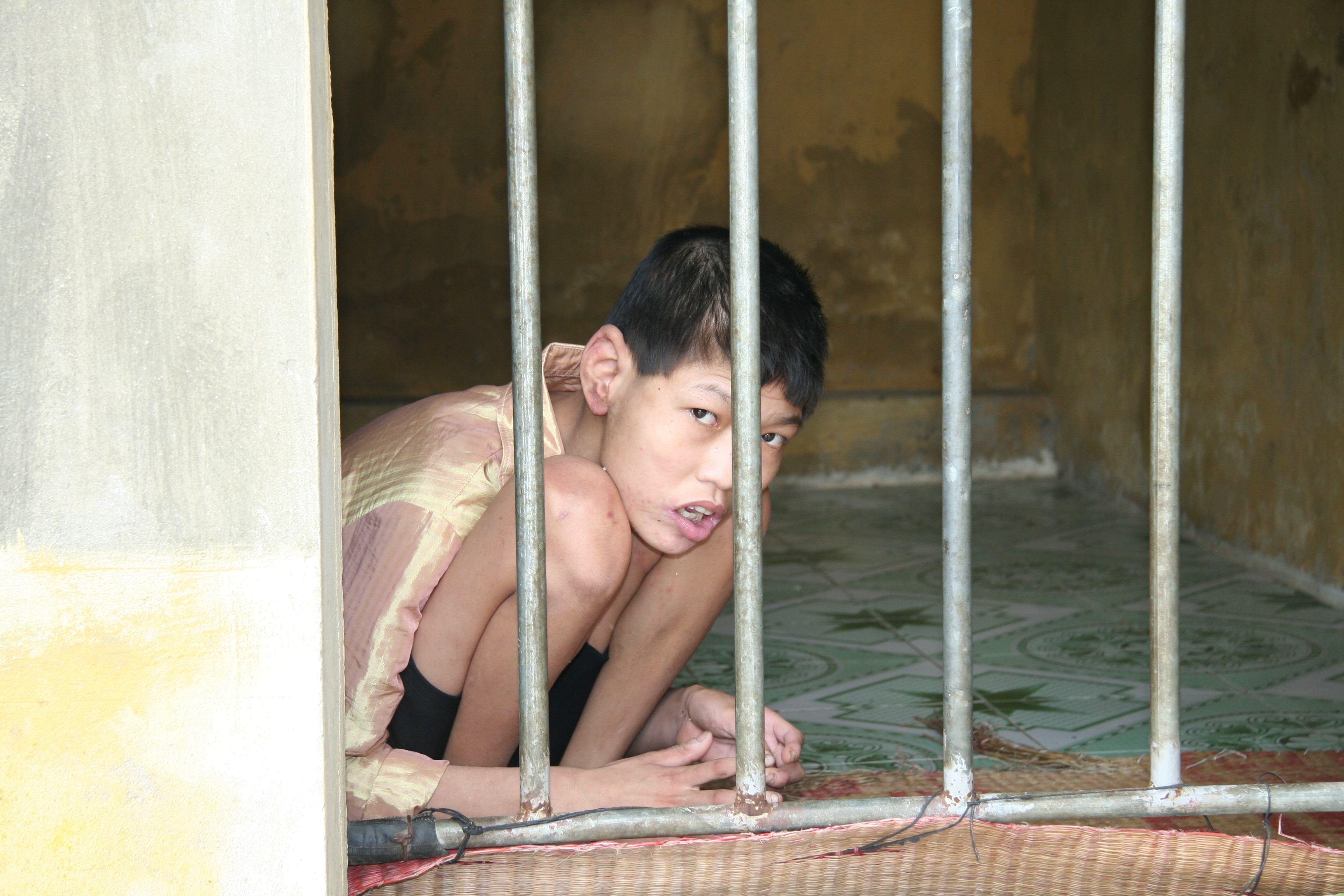
They called her the girl in the cage. "How about her?" the Vietnamese official asked, flipping the book to an image of a girl crouched behind bars. The thick album in front of me featured photographs and short bios of purported Agent Orange victims. There was the boy with no arms, the girl with the squished head and eerie, enlarged eyes, and dozens of other kids with heart-breaking birth defects. Neatly dressed members of the Vietnam Association for Victims of Agent Orange/Dioxin were offering these children to me like they were shoes in a catalog. It was 2007, and I was in Vietnam to report on the environmental consequences of the conflict the Vietnamese call the American War.
Agent Orange was an herbicide that American forces used to clear jungle vegetation that gave cover to Vietnamese insurgents. The stuff was supposed to contain 2,4,5-trichlorophenol, but shoddy manufacturing methods left Agent Orange tainted with 2,3,7,8- tetrachlorodibenzodioxin (TCDD), a dioxin the EPA has labeled a "probable carcinogen." American veterans of the Vietnam War with presumed exposure to Agent Orange receive compensation for a list of more than a dozen health problems, including cancer and certain birth defects in their children. Vietnamese sprayed with Agent Orange receive no direct compensation from the U.S. or the chemical's makers.
As environmental scientist Wayne Dwernychuck documents in his report, "Hypocrisy and Intransigence—Mainstay of the Agent Orange Controversy," a memo from V. K. Rowe of the Biochemical Research Laboratory of Dow Chemical marked "confidential" and dated June 24, 1965 states:
When we (military scientists) initiated the herbicide program in the 1960's, we were aware of the potential for damage due to dioxin contamination in the herbicide. We were even aware that the 'military formulation' had a higher dioxin concentration than the 'civilian' version due to the lower cost and speed of manufacture. However, because the material was to be used on the 'enemy,' none of us were overly concerned.
"This one —she screams all the time and her family has to keep her in a cage," said my fixer, the journalist Tran Le Thuy, pointing to the photo of the girl in the cage. I was horrified and intrigued, and so we went to Nam Dinh to meet this girl and her family.
What we saw there broke my heart — a family barely scraping by, and parents crushed by the demands of two children unable to lead normal lives. The family lived in a tiny concrete house with minimal furnishings and one side open to the elements. It wasn't immediately obvious what, exactly, was wrong with the caged girl. When I arrived, she was crouched in the small cement "cage" where her family kept her much of the day, and her eyes darted about wildly while she emitted animal-like screams. When her mother brought her out of the cage, she shuffled with lanky, misshapen limbs that flopped awkwardly as she moved. Her older sister had a deformed leg that made walking difficult.
"No man will marry my daughters," their mother cried to me. "I don't know who will take care of them when I'm gone." I'm ashamed to admit that I briefly considered the possibility that these maladies were embellished to win my sympathy, but the pain on the parents' faces and the devastating poverty in which they lived was unmistakably real. As a journalist, I wondered whether their problems were the result of poverty or of war, but as a human being my only question was what they needed to ease their suffering.
Certain facts are beyond dispute. Some Vietnamese soldiers, the caged girl's father among them, were sprayed with Agent Orange. Canadian researchers have documented 28 places with extreme TCDD contamination—they call them dioxin "hotspots" —in regions where Agent Orange was stored and spilled by US troops. These hotspots include the Da Nang, Phu Cat and Bien Hoa airbases that staged Operation Ranch Hand missions.
While in Vietnam, I interviewed Dr. Mark Rappoport, a physician who was slated to serve as primary investigator on a joint U.S.-Vietnam study designed to determine, once and for all, whether Agent Orange was causing birth defects in Vietnam. Politics killed the study before it began. Rappoport argues that we will never have a scientific answer and so the logical thing now is to stop pointing fingers and do what we can to help those in need.
It sounds so reasonable, and yet my fixer, Thuy, was infuriated by Rappaport's suggestion. To her, moving forward without any acceptance of blame was akin to denying the victims their suffering. The victims' pain required acknowledgment. They deserved an apology.
And what about the birth defects that weren't related to Agent Orange, I wondered? Given the existing science on TCDD, it's almost impossible to imagine that Agent Orange wasn't causing any lingering effects, but what if the rush to blame Agent Orange was masking other problems like malnutrition, and preventing them from being remedied?
Last week, after more than 20 years of delay, the EPA finally released its report on the health risks associated with dioxins, including TCDD. It wasn't until I held it in my hands that I realized I'd had impossible hopes for the report. Plowing through its dense text, I suddenly understood what it was I was looking for — a response to a question that science can't answer definitively. Did my country make the caged girl scream?



